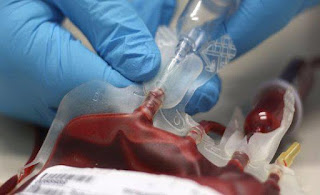Intranasal Immunization: Unraveling the Potential of Nasal Vaccines
Traditional vaccination methods have been instrumental in preventing numerous infectious diseases and saving countless lives. Most vaccines are administered through injections, but emerging research is shedding light on a promising alternative: nasal vaccines. By delivering vaccines through the nasal route, this innovative approach offers several advantages, unlocking new possibilities in preventive medicine. In this blog, we delve into the potential of intranasal immunization and its exciting implications for the future.
What Are Nasal Vaccines?
Nasal vaccines, also known as intranasal vaccines, are a type of immunization delivered through the nose. Unlike conventional vaccines administered via injection, nasal vaccines take advantage of the mucosal immune system, which lines the respiratory and gastrointestinal tracts. This mucosal immunity plays a vital role in defending against pathogens that enter the body through these entry points.
How Do Nasal Vaccines Work?
When a nasal vaccine is administered, it stimulates an immune response in the mucosal tissues of the nasal cavity. This response activates the production of immunoglobulin A (IgA) antibodies, which are crucial for neutralizing pathogens at the site of entry. Additionally, the immune cells in the nasal mucosa can trigger a systemic immune response, providing protection not only at the nose but also throughout the body.
Advantages of Nasal Vaccination
Needle-Free Administration: Nasal vaccines eliminate the need for injections, making the immunization process more comfortable, especially for children and individuals with needle phobia.
Enhanced Protection at the Site of Entry: By targeting the respiratory tract directly, nasal vaccines can bolster immunity at the site where many infections first take hold.
Inducing Systemic Immunity: Nasal vaccines not only provide local protection but also stimulate a systemic immune response, offering comprehensive defense against the targeted pathogen.
Ease of Distribution and Administration: Nasal vaccines are relatively easy to administer and do not require refrigeration, simplifying distribution and storage logistics.
Potential for Needle-Free Mass Vaccination: Nasal vaccines have the potential to facilitate mass immunization efforts, as they can be easily self-administered or delivered by healthcare workers without the need for specialized training.
Current and Future Applications
Intranasal immunization is already in use for certain vaccines, such as those for influenza and some childhood respiratory infections. However, ongoing research is exploring the broader potential of nasal vaccines. Scientists are investigating their effectiveness against a range of pathogens, including respiratory viruses, bacterial infections, and even novel approaches for certain types of cancer.
Challenges and Considerations
While nasal vaccines show great promise, some challenges must be addressed. Ensuring the stability and viability of the vaccine during manufacturing and storage is critical. Additionally, since the nasal mucosa can be sensitive, formulating vaccines to be both effective and non-irritating is a key consideration.
Conclusion
Intranasal immunization represents an exciting frontier in the world of vaccination. By harnessing the power of the nasal mucosa, these vaccines offer unique advantages, from providing local protection at the site of entry to triggering a systemic immune response. As research continues to unveil the full potential of nasal vaccines, we may witness a transformative shift in preventive medicine, leading to more efficient, comfortable, and widespread vaccination practices that protect individuals and communities against a range of infectious diseases. However, further studies and regulatory approvals are necessary before these innovative vaccines become commonplace, ensuring safety, efficacy, and accessibility for all.




Comments
Post a Comment